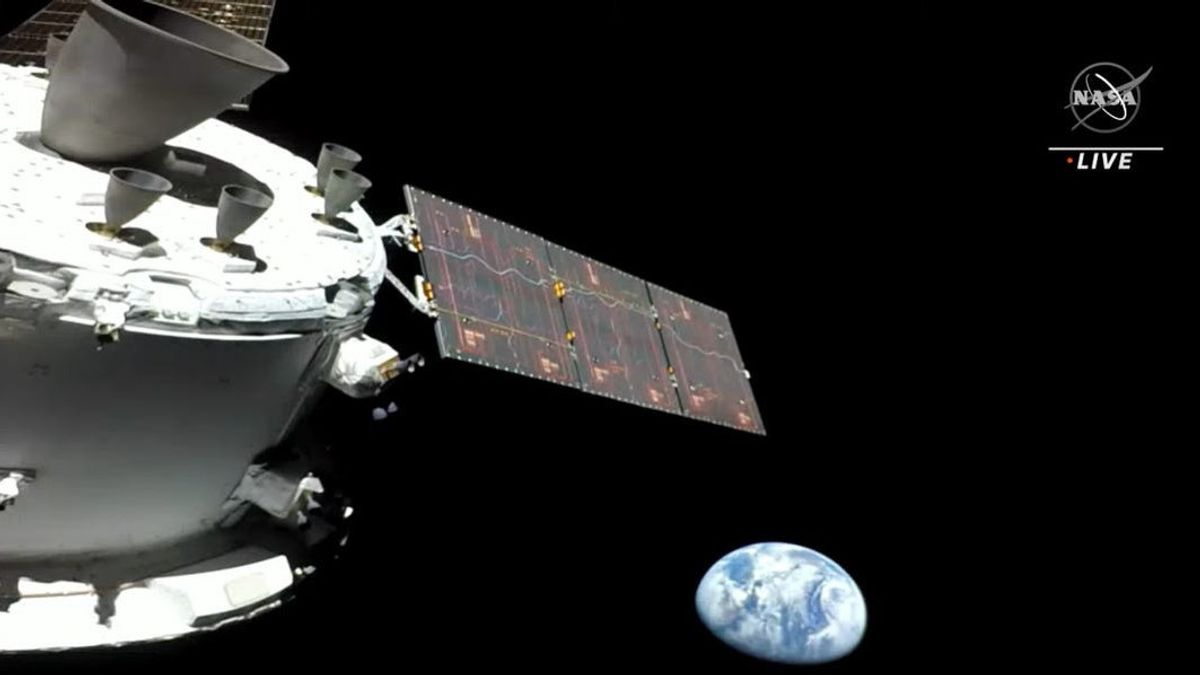JAKARTA - Recently NASA's Artemis I mission propelled the unmanned Orion spacecraft on a trajectory to the Moon with the space agency's powerful Space Launch System (SLS) rocket launch.
During its journey into lunar orbit, Orion captured this incredible view of Earth about nine hours after launch from the Kennedy Space Center in Florida, United States (US).
The first view of Earth was captured by a camera mounted on one of the wings of the Orion solar array, when the spacecraft was more than 57,000 miles away from Earth.
The total cameras in Orion are 16 cameras. This aims to monitor the performance of the capsule components from launch as well as during the journey to their destination to provide images inside and outside the aircraft.
This is the first view of Earth from a spacecraft that has driven humans to the Moon since the Apollo 17 mission in 1972.
"The view of our blue marble in the darkness of space is now capturing the imagination of a new generation, the Artemis generation," said NASA spokeswoman Sandra Jones.
Orion will carry out its mission into lunar orbit, test its various orbits, close to the moon over the next 25 days, and that will pave the way for future manned trips to the lunar surface.
VOIR éGALEMENT:
Citing Science Alert, Friday, November 18, taking selfies with Earth wasn't the only thing Orion and the Artemis 1 team did in the first 24 hours of the mission. The 10 shoebox-sized satellites were deployed from the upper stage of the SLS after the trans-lunar injection.
One of the CubeSats, Lunar IceCube will search for signs of water ice on the Moon. Another satellite, LunIR, will take images of the lunar surface to characterize the lunar thermal environment from the lunar surface.
Japan's Omotenashi satellite will attempt a semi-hard but survivable landing on the Moon, while NASA's NEA Scout is built to unfurl the sun sails and fly high to study near-Earth asteroids.
Over the coming weeks, the Artemis 1 team will monitor Orion's performance, as a test run for the manned Moon circumnavigation scheduled for 2024 and the manned Moon landing planned for 2025.
The English, Chinese, Japanese, Arabic, and French versions are automatically generated by the AI. So there may still be inaccuracies in translating, please always see Indonesian as our main language. (system supported by DigitalSiber.id)













